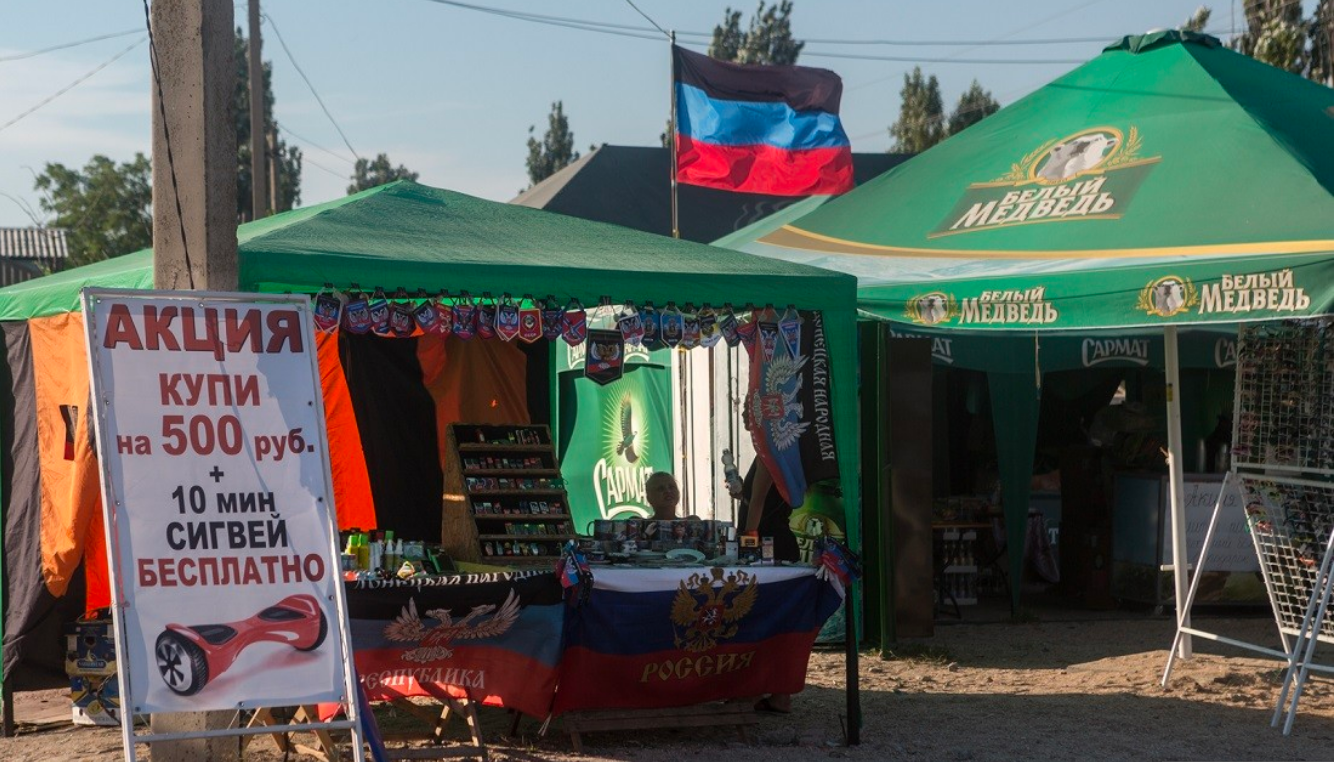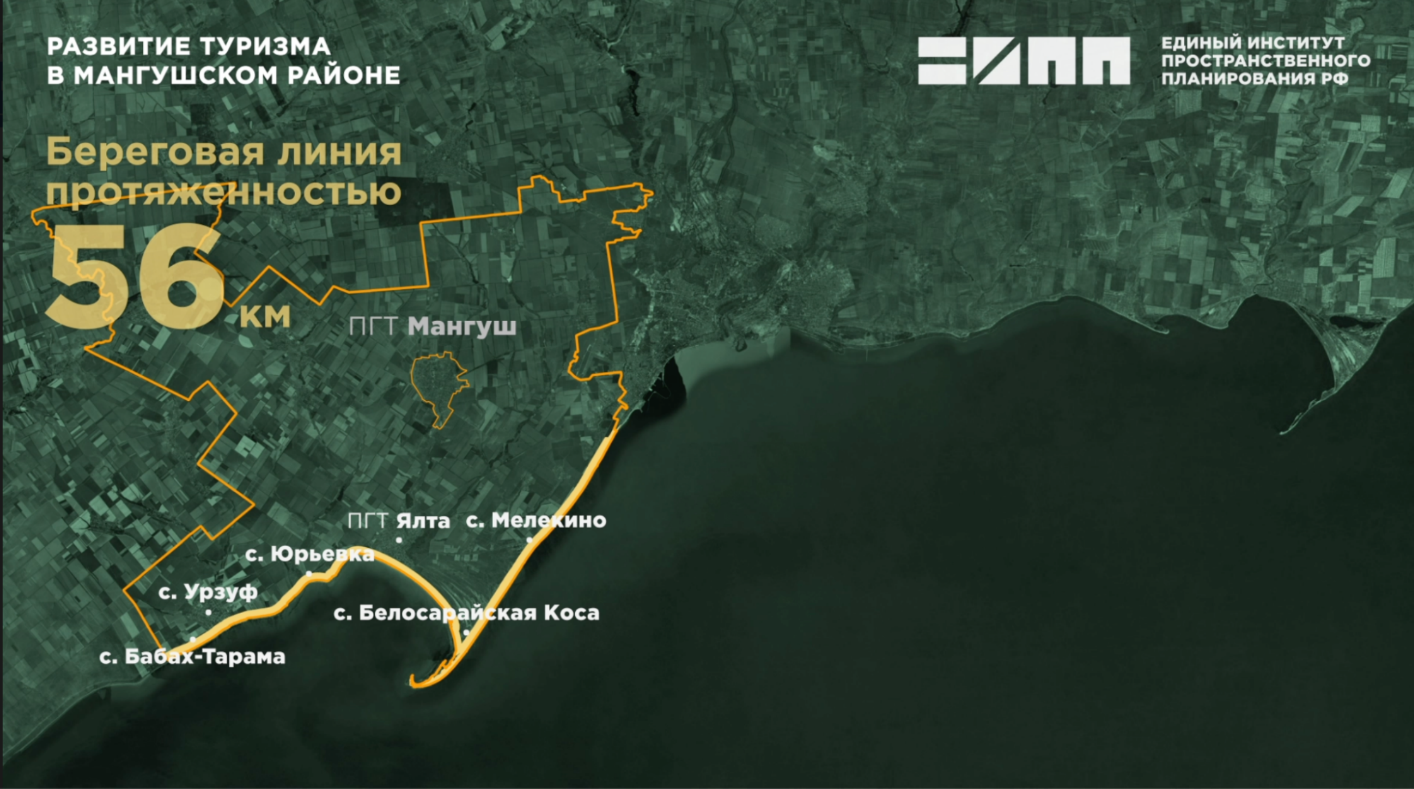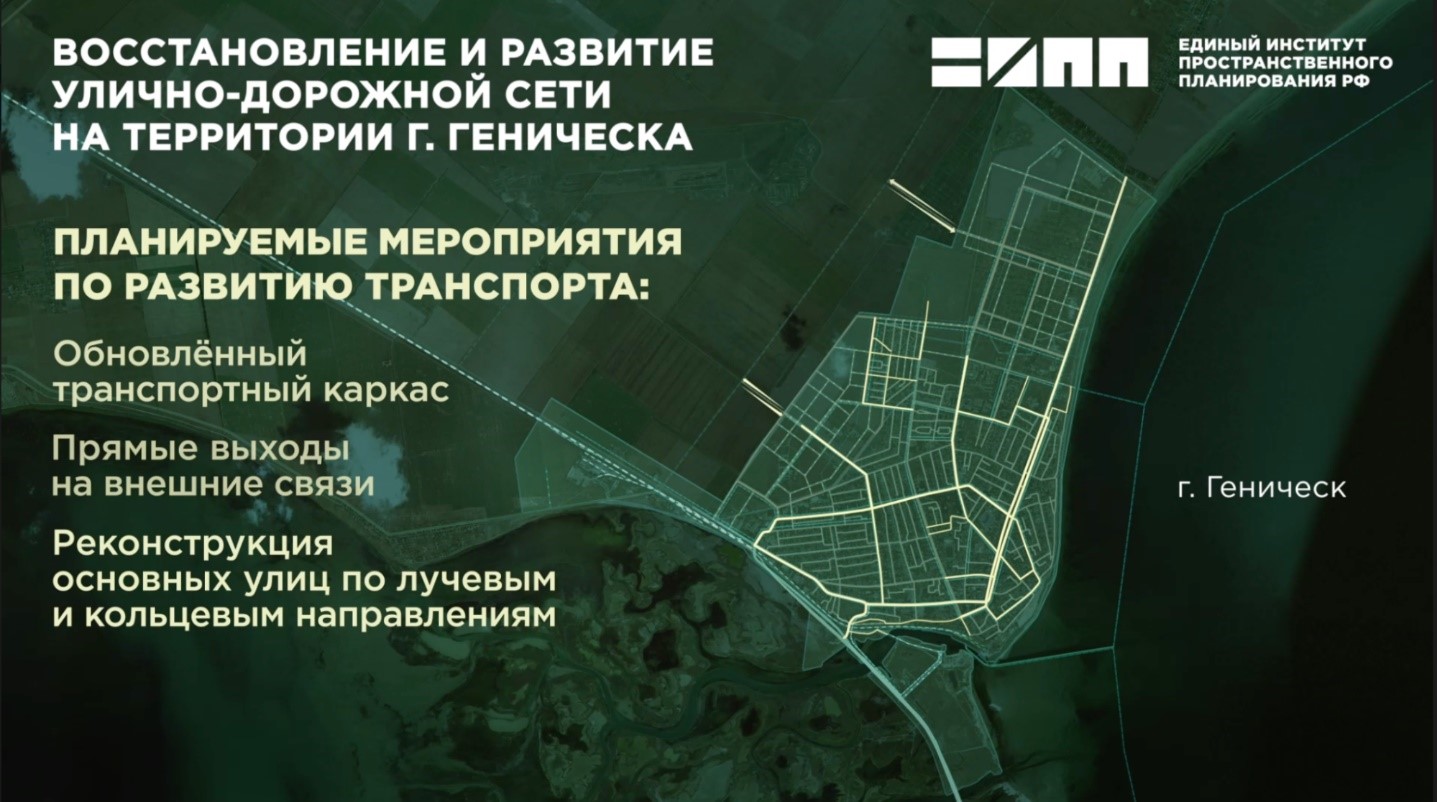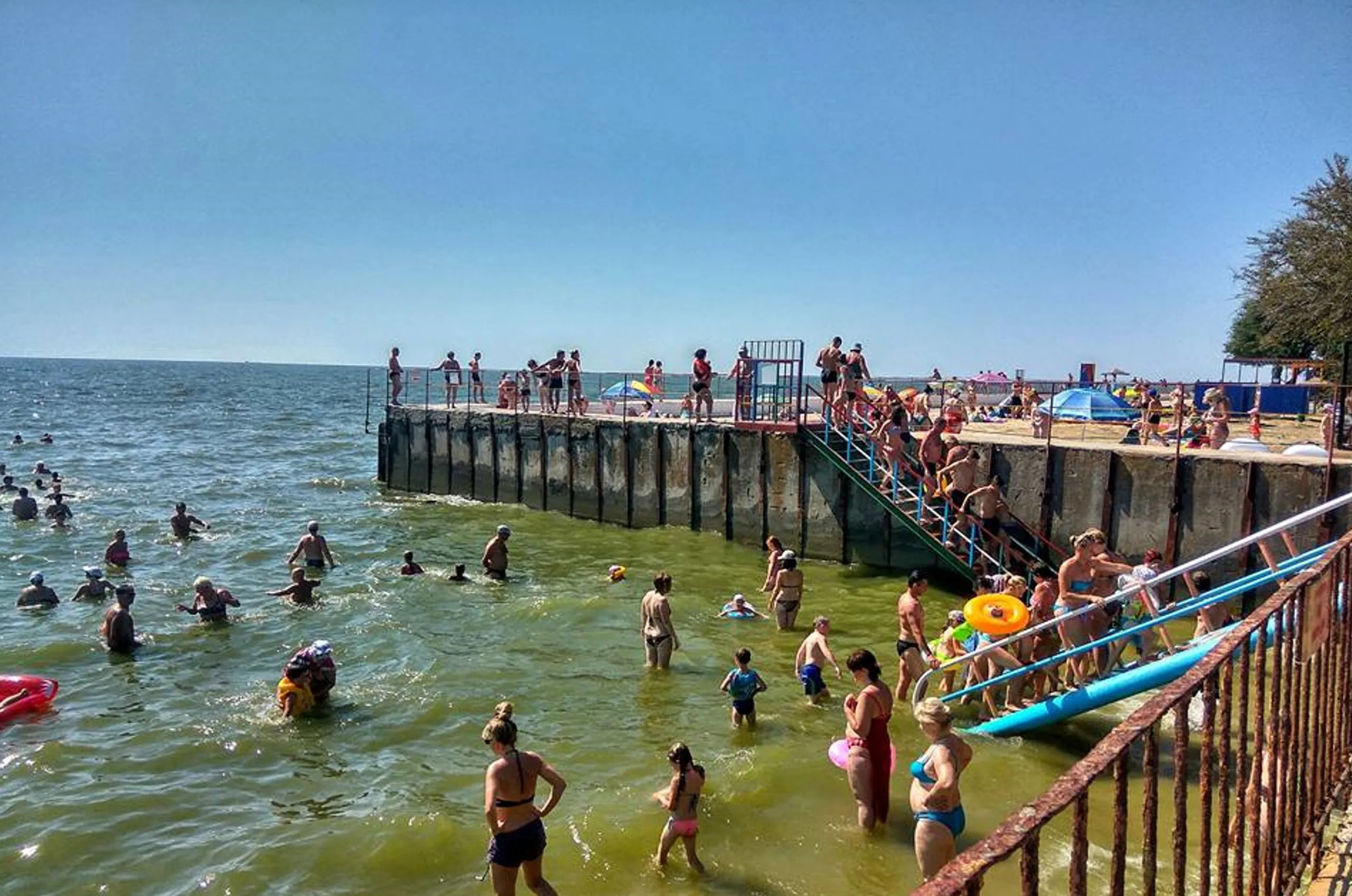The aggressor state creates the illusion that the occupied resorts enjoy popularity. But the reality looks different
Since 2023, Russia has, as it claims, set a goal to "revive tourism" in the occupied territories of Kherson, Zaporizhzhia, and Donetsk regions. Through a network of telegram channels identified by the OPORA Civil Network, as well as other social networks and media, Russian spin doctors are creating the illusion that the occupiers are actively working to restore tourism.
We have analyzed 3,010 messages from local pro-Russian telegram channels that mentioned tourism in the temporarily occupied territories (TOT). The study covered the period from May 2023 to May 2024.
Russian policy on tourism in the occupation
Before the full-scale invasion, there was a seaside resort in the village of Siedove, Donetsk region, occupied since 2014. With the creation of the fake “Luhansk and Donetsk People’s Republics”, Siedove became almost the only possible place for local residents to relax by the sea.
"Almost every gate here has a "No room" sign on it. The former barn houses a double room, which costs 200 rubles a day for a bed, 400 rubles for the entire room, and the amenities are in the yard. Sheds, chicken coops, hangars, and attics are also being converted into accommodation," the Russian publication Medusa reported about the resort in August 2016. However, local residents were developing tourism in the village mostly on their own.

The main resort of the fake "LDPR" is the village of Siedove in Donetsk region (source: @varlamov, Teletype.in)
In 2022, Russia occupied new settlements on the coasts of the Azov and Black Seas: Mariupol, Melekine, and the Bilosaray Spit in Donetsk region; Melitopol, Berdiansk, and Kyrylivka in Zaporizhzhia region; as well as Skadovsk and Arabatska Strilka in Kherson region.
Most often, Russian propaganda promises new development, restoration of recreation centers "abandoned by Ukrainian authorities" and a "bright tourist future for the region," often exaggerating the potential number of holiday makers.
In May 2024, the pro-government RG.RU published a column about tourist routes in the "new regions," encouraging its readers to spend vacations in the seaside resorts of the TOT. In a commentary for the media, collaborator Yevhen Balytskyi "predicted" a 24% increase in the number of tourists in the TOT compared to previous year. This is approximately 100,000 people – but how exactly this percentage was calculated remains a mystery.
Local pro-Russian telegram channels also assure that 70% more hotels are waiting for new tourist arrivals compared to last year. The Russian authorities plan to receive "guests" in both seized buildings and newly created centers. The Russian government has allocated 521 million rubles from the federal budget for the so-called "restoration" of the tourist infrastructure in the occupied territories. According to some channels, by 2040, the Russian authorities plan to have 15 million tourists coming to the resorts of the south every year.
At the same time, Russian propaganda speaks of vacation destinations in the newly occupied territories as a cheap, lower-quality, and mostly local-oriented substitute for other resorts, including those in the Crimea.
"The nature and climate there (in the TOT) are poorer, there may be some unique places, but not to everyone's taste – for example, the Askania-Nova Park," says Volodymyr Yezhov, a pro-Russian scientist from the temporarily occupied Crimea. "Most likely, in the near future, they will be in demand as local resorts for residents of new regions. There is a high probability that rehabilitation centers for the participants of the Special Military Operation (SVO) will be organized there."
In addition, Russia applies another policy to the occupied resorts:
- raising funds for development of tourism infrastructure from the Russian state budget and from public (sponsoring regions) and private (businesses) investors;
- minor reconstruction: improvement of beaches, restoration of recreation centers, etc;
- information campaigns, such as interviews with local collaborators and Russian politicians about the region's tourism potential;
- providing vacation packages to the occupied resort towns for TOT residents;
- building children's camps on the occupied parts of the Azov and Black Sea coasts.
Donetsk region
"Those who need to make their dream come true should go to Donbas," – this is what the tourist slogan of the region should be according to Denis Pushilin, the leader of the DPR.

In May 2023, collaborator Yevgeny Solntsev stated in his Telegram channel that the Russian Federation would finance old Soviet recreation centers on the Azov Sea from the federal budget. There were also plans to engage investors in order to attract tourists to the DPR.
In addition to private investors (so far unknown), the sponsoring regions of the Russian Federation are also investing in the Azov Sea coast: they are allegedly involved in the development and arrangement of boarding houses and recreation centers. As of April 2024, the “DPR Ministry of Economic Development” was developing 10 tourism investment projects on the Azov Sea.
The invaders identified Mariupol as one of the key tourist centers in the occupied Donetsk region. In 2023, the pro-Russian telegram channel Mariupol Life manipulatively stated that the city and its surroundings become the most popular route for vacationers from the so-called DPR, for whom "comfortable conditions" had been created. It is not clear what kind of conditions they are talking about, as the video attached to the post shows footage of a typical beach vacation with stock music.
Representatives of the local administration reported that a beach of allegedly 100,000 hectares had been created by an order of the state-owned company "Single Customer in the Construction Sector".
Telegram channels were also sharing an interview with Denis Pushilin, the leader of the so-called "Donetsk People's Republic," in which he spoke about abandoning plans to restore Azovstal. "I remember our sea in the 80s, when I was a very young Komsomol member. Even then the water was not so clean, and in the USSR the ecology of resorts was always well monitored," Halyna Basko, a "resident of Mariupol," told the Mariupol Now publication.
However, Donetsk region is rich in other coastal settlements, which the occupiers also plan to make more "attractive for tourists". These are, for example, the village of Urzuf (which in 2023 was considered the most expensive resort in the occupied Donetsk region), Melekine, Yalta (Manhush district), etc.
In May 2024, the Unified Institute of Spatial Planning of the Russian Federation presented a master plan for the development of the “Manhush Municipal District”. The aggressor state plans to build new hotels there, lay a road connecting these settlements, and open a yacht club. The report does not indicate how the development will affect the environment and historical and cultural heritage of the region or whether Russia will be able to ensure a safe and secure vacation for tourists.

Kherson region
"Pheasants running along the road on the Arabat Spit. All of this is now the property of all Russia," collaborator Volodymyr Saldo said in January 2024 in an interview with Rossiyskaya Gazeta. The statement was later spread around telegram channels in Kherson region.
Saldo told reporters that in 2023, Russia allegedly began to actively develop tourism on the left bank of Kherson region. Prior to that, in December 2023, the occupier claimed that the region was on the verge of a tourism and construction boom. Russia has been announcing plans to develop tourism in Kherson region since 2022.
As local official Serhii Hrishyn put it, not only the sea beaches but also the banks of the Dnipro River can become a "point of attraction" in the occupied part of Kherson region. The occupier, of course, did not specify how tourism could be developed on the Dnipro after the Kakhovka hydroelectric power station was blown up and in the midst of hostilities, but he added that two Russian tour operators were already operating in Kherson region.
Also, the aforementioned "Unified Institute for Spatial Planning of the Russian Federation" has developed a plan to "improve" the coastal areas of Kherson region.
In Henichesk and the surrounding area, the occupiers are seeking to "develop transport infrastructure" – to increase traffic flow through the Arabat Spit, reconstruct the road there, and build an alternative route to the Crimea. They also announced plans to build new residential areas in the city. This, according to the institution, will make tourist sites "more accessible", but it will likely be used mainly to support military logistics in the region.

In August 2023, the propaganda telegram channel Pro Kherson published an article entitled "Revival of Kherson Region's Tourist Glory", in which it accused the Ukrainian authorities of destroying, stealing, and privatizing property in the region, as well as (surprisingly) locating biolabs in Askania-Nova.
"This May, the natural reserve was mentioned in the reports of the Russian Defense Ministry. According to the military agency, one of the Ukrainian biolaboratories that worked for the Pentagon was located here," the author played along with Russian narratives. However, according to him, everything will change soon, and thanks to Russia, the tourism industry in Kherson region will reach the level of the Crimea or Kuban.
Zaporizhzhia region
In August 2023, Zaporizhzhia News Agency published a quote from the so-called "first deputy head of the region" Serhii Tolmachov. He claimed that as soon as the Russian army "pushed" the front line "back", the tourism industry in the region would definitely go up.
And although, according to DeepState, the situation in Zaporizhzhia has hardly changed over the year, in May 2024, Oleksii Lysov, responsible for the "social development" of the occupied part of Zaporizhzhia region, lied on his telegram channel that the region was preparing for the tourist season.
The money to rebuild the infrastructure came from the federal and regional budgets. In particular, the "authorities" of the occupied region want to open water parks, a zoo and a dolphinarium, despite the danger to visitors and animals. Earlier, the occupation media emphasized that the safety of vacationers should be a priority.
In June 2024, the so-called "governor of Zaporizhzhia region" Yevhen Balytskyi wrote that Berdiansk was included in the vacation program of a Russian tour operator from Rostov. The route is called "The Wave of Azov. Weekend in Berdiansk".
Since 2023, TOT residents have been able to receive vacation packages on the occupied territories. For example, with the assistance of the United Russia party, in August 2023, veteran builders of the Zaporizhzhia NPP were vacationing in Kyrylivka. In 2024, the Russian authorities also planned to send local school students to children's camps in the TOT.
Although the main "bulk" of vacationers in the TOT are locals, the so-called "senator for Zaporizhzhia region" in the Russian parliament Dmytro Vorona claims that people from "central Russia" may well spend their vacations in the region.
Representatives of the occupation authorities in Zaporizhzhia region have even managed to raffle off vacation packages to the Azov Sea at the “International Tourism Exhibition” in Moscow.

The text of the post: At the stand of Zaporizhzhia region of the International Travel & Hospitality Show (MITT) in Moscow there was a drawing of vacation packages to the Azov Sea coast
At the stand of Zaporizhzhia region there was a raffle for six weekend tour certificates.
The winners will have a two-day vacation for two people on the Azov Sea coast.
The winners of the raffle were very satisfied and promised that they would definitely come to Zaporizhzhia region in the summer. In addition to the travel vouchers, delicious and sweet prizes from the confectionery products makers of Zaporizhzhia region were raffled off.
To be able to receive more tourists, the occupiers are actively building up the coast, and telegram propaganda brands the construction as the first step to the region's great future as a tourist destination.
For example, on the Obytichna Spit near the city of Prymorsk, they plan to build a recreation complex with sanatoriums – about a hundred hotels with 15 thousand rooms. The occupiers believe that "all this will increase the tourist flow to 2 million tourists a year and create more than 20 thousand new jobs." And in occupied Kyrylivka, they even remembered about people with disabilities: in addition to a hotel and water sports area, they will build a ramp and hire a sign language interpreter.
In January 2024, pro-Russian telegram channels and media spread the words of the so-called "Acting Minister of Resorts and Tourism of Zaporizhzhia Region" Ihor Kotliar: "The advantage of the Azov Sea coast is that there is a lot of free land there, and it [the coast] can be systematically developed."
Children's camps in the TOT
In children's camps, the Russian Federation is "re-educating" and militarizing Ukrainian schoolchildren integrating them into the Russian cultural and educational space. The Humanitarian Research Laboratory at the Yale School of Public Health found that as of February 2023, approximately 6,000 children from Ukraine were held in at least 43 children's camps in Russia and the occupied Crimea.
Often, the occupiers send children to "recreation" by force: parents' refusal is ignored, they are not informed about the conditions of stay in the camp, and sometimes even about the specific place where a child currently lives. In addition, shifts are often delayed in such institutions, preventing children from returning home on the promised dates.
In total, the occupiers planned to send 327,000 local children on "vacation" over the summer.
In May 2024, the occupier Oleksii Lysov said in his telegram channel that a network of children's camps was being restored in the occupied part of Zaporizhzhia region.
For example, in Berdiansk, a branch of the Artek camp is being opened at the Krasnaya Gvozdika recreation center where the staff from the Crimean Artek is going to come. The camp plans to have 5 shifts accepting more than a thousand children from the TOT.
What do potential "tourists" think?
Instead, social media users are writing about the general abandonment of resorts in the TOT, high prices, and the danger of such recreation. For example, some VKontakte users in groups dedicated to renting housing in the TOT (we found 8 such groups) complain about the abandonment of resorts.

The text of the post:
Artur Sergeyevich
Melekino used to be all right, but now everything is abandoned there....
Boarding houses Chaika, Sirena, Volna, Svetlana, and Troyanda used to be top, and now it is grass around the waist, all houses dilapidated and abandoned. In general, now Melekino is not what it used to be. The same applies to Yalta, everything abandoned as well, and in the past, the Ugoliok boarding house was the best.
Urzuf is more or less plausible now.
Larisa Adzhavenko
Arthur, come to Urzuf with your friends, we will give you a worthy welcome
Others complain about the lack of sophistication of recreation centers. "Urzuf. Should we cancel the wedding for this?" a VKontakte user responded to a post in one of the real estate rental groups, which stated that the author wanted to spend vacations with her beloved in Urzuf or Berdiansk instead of celebrating a wedding.

Yevgeniya Poliakova
To Urzuf (?) Cancelling your wedding for this (?).
I thought at least Sochi/Crimea, maximum – Turkey. And here you have the Azov Sea at the price of a wedding for 80 persons.
In the comments to a YouTube video about a vacation in Siedov, an unknown person "7108" wrote that it was a humiliation for a person to rest there. "If this is the DPR, then this is the territory of Russia, and I assure you that this shame will be transformed into normal and even good conditions for people."

@7108
Shit… this is a humiliation for a human being… there is nothing in Russia even close to what is shown on the picture, this is some kind of disgrace… If this is the DPR, this is Russian territory and I can assure you this disgrace is going to be transformed into normal or even good conditions for people. This is a matter of time, but this is going to happen for sure.
Some people do not trust the stories of the Russian authorities about the safety of spending holidays in the TOT. For example, users wrote negative comments under the post about Urzuf on dzen.ru, pointing out that it is dangerous and unjustified to rest in the resorts of the so-called DPR.

The text of the post:
Incognito 1253
There are hostilities going on there
Mikhail Sdvizhkov
I’d better stay at home in the garden
Rita Blok
I thought nothing could surprise me from what they are writing on Zen. But no, I’ve been surprised now. The topic of the day - *Vacations in the DPR seaside 2024*, the comfortable bus will rush you from Mariupol like the wind. To be frank, I crossed myself three times. Who are those people booking vacations there in February? Author, is this a lame joke of yours? Nobody used to have holidays there since 2014, and now, when you have the SVO, they open hotels and beaches. Why on earth?
Mafiozo
Europeans have already forgotten where Antalya is… they are going to the DPR for holidays in thousands
Not your day today
Everything is well of course, but the war is going on, what holidays do you mean? You can get shelled any moment.
Unfortunately, using propaganda media and social network pages, the aggressor state is creating the illusion of the popularity of the occupied resorts, talking about the money and efforts invested, and constantly emphasizing the huge tourist potential. At the same time, the Kremlin does not care about the shortage of housing among locals, safety of holiday makers, or environmental damage that chaotic and unplanned development can cause.
